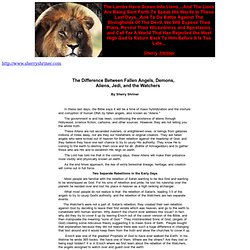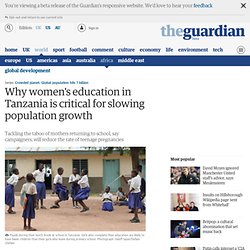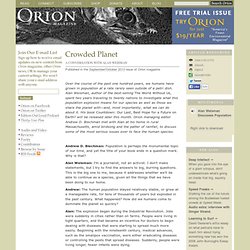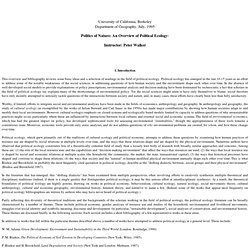

» Listen to the Radio Show Archive Alex Jones. Lindsey Williams. The Difference between Aliens, Demons and Fallen Angels. The Difference Between Fallen Angels, Demons, Aliens, Jedi, and the Watchers By Sherry Shriner In these last days, the Bible says it will be a time of mass hybridization and the mixture and corruption of human DNA by fallen angels, also known as "Aliens.

" The government is and has been, conditioning the existence of aliens through Hollywood, science fiction, cartoons, and other sources. However, they are not telling you the whole truth. These Aliens are not ascended masters, or enlightened ones, or beings from galaxies millions of miles away, nor are they our forefathers or original creators. The Lord has told me that in the coming days, these Aliens will make their presence more visibly and physically known on earth. As the end times approach, the lies of extra terrestrial lineage, heritage, and creation will come out in full force. Two Separate Rebellions in the Early Days Most people are familiar with the rebellion of Satan wanting to be like God and wanting to be worshipped as God. WEF (Thematic Studies) Why women's education in Tanzania is critical for slowing population growth.
"When you educate a woman, you educate a nation," says Kalunde, whose foster child was thrown out of her rural school and her home after becoming pregnant.

"A woman is a mirror and spends much of her time with her children. " Every day across Tanzania, hundreds of schoolgirls become pregnant, bringing their learning to a halt. The taboo of young mothers returning to lessons is especially strong in the profoundly poor, drought-prone region of Shinyanga, where Kalunde lives, and rate of school pregnancies is rising. "Education is an absolute priority in these regions," says Julitta Onabanjo, the UN Population Fund's representative in Tanzania. "It is really stark, in regions like Arusha and Kilimanjaro where education is valued, for example, women have an average of two to three births, but in places like Shinyanga there are seven births on average. "The government really needs to slow this population growth down, or increase economic growth, which is very hard," says Onabanjo. Multicolor728.qxd.
Crowded Planet. A conversation with Alan Weisman Over the course of the past one hundred years, we humans have grown in population at a rate rarely seen outside of a petri dish.

Alan Weisman, author of the best-selling The World Without Us, spent two years traveling to twenty nations to investigate what this population explosion means for our species as well as those we share the planet with—and, most importantly, what we can do about it. His book Countdown: Our Last, Best Hope for a Future on Earth? Will be released later this month. Orion managing editor Andrew D. Andrew D. Alan Weisman: I’m a journalist, not an activist. Andrew: The human population stayed relatively stable, or grew at a manageable rate, for tens of thousands of years but exploded in the past century. Alan: The explosion began during the Industrial Revolution. Andrew: Before that, we were basically at a replacement rate? Alan: Pretty much. Andrew: You’re speaking of the Haber-Bosch process. Alan: Yes. Under what social and ecological conditions does rapid population growth drive environmental degradation? Over the past decade or so a substantial body of research has shown that environmental degradation is both an ecological and a social phenomenon, an.
University of California, Berkeley Department of Geography, July, 1995 Politics of Nature: An Overview of Political Ecology* Instructor: Peter Walker 1.

Introduction This overview and bibliography reviews some basic ideas and a selection of readings in the field of political ecology. Worthy, if limited, efforts to integrate social and environmental analyses have been made in the fields of economics, anthropology and geography. Political ecology, which grew primarily out of the traditions of cultural ecology and political economy, attempts to address these questions by examining how human practices of resource use are shaped by social relations at multiple levels over time, and the ways that these relations shape and are shaped by the physical environment. List of sovereign states and dependent territories by fertility rate. A world map showing countries by fertility rate (2014) - according to CIA World Factbook of 2014 This is a list of all countries and dependent territories by total fertility rate (TFR): the expected number of children born per woman in her child-bearing years.

Methodology[edit] The UN ranking is sourced from the United Nations World Population Prospects. Figures are from the 2012 revision of the United Nations World Population Prospects report, for the period 2010-2015, using the medium assumption.[1] Only countries/territories with a population of 100,000 or more in 2010 are included. Rank is based on 2010-2015 figure. The CIA ranking is sourced from the CIA World Factbook[3] unless otherwise specified. Countries[edit] Note: (-) Data unavailable, inapplicable, not collected or country or dependent territory not included. Country ranking and comparison: 1970 and 2013[edit] Notes: See also[edit]